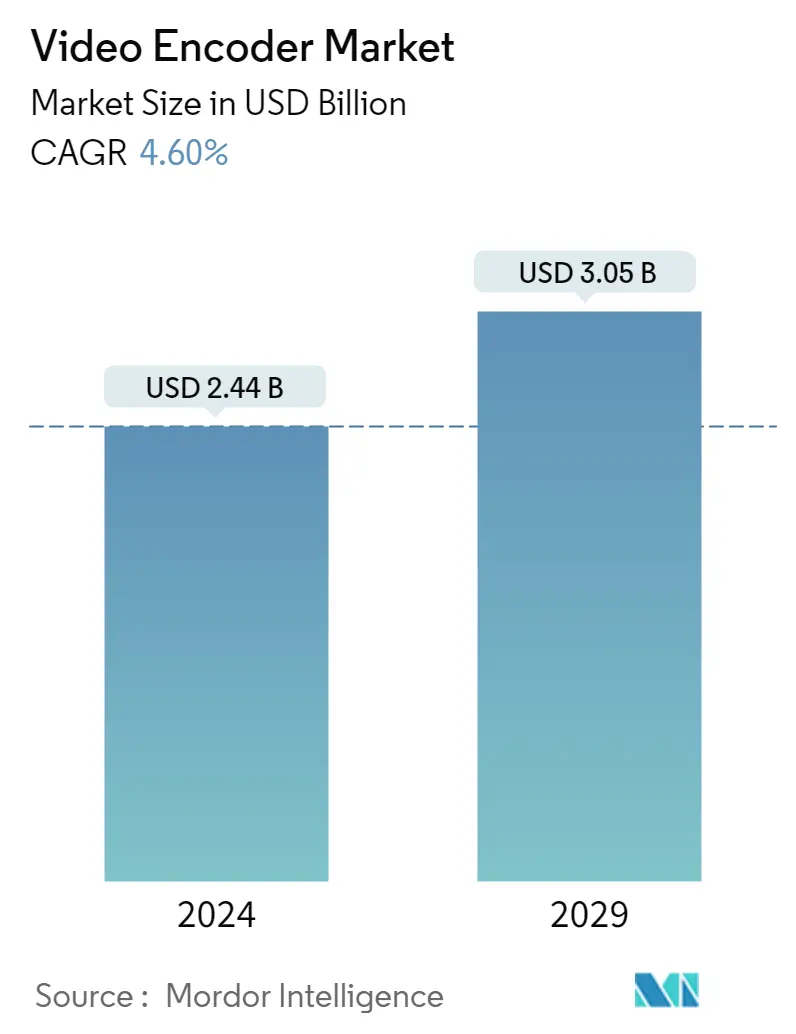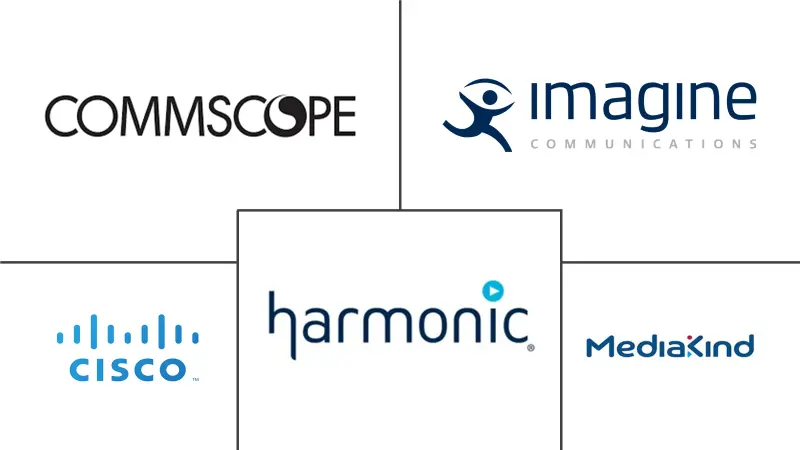Market Size of Video Encoder Industry

| Study Period | 2019 - 2029 |
| Market Size (2024) | USD 2.44 Billion |
| Market Size (2029) | USD 3.05 Billion |
| CAGR (2024 - 2029) | 4.60 % |
| Fastest Growing Market | Asia-Pacific |
| Largest Market | Asia-Pacific |
Major Players
*Disclaimer: Major Players sorted in no particular order |
Need a report that reflects how COVID-19 has impacted this market and its growth?
Video Encoder Market Analysis
The Video Encoder Market size is estimated at USD 2.44 billion in 2024, and is expected to reach USD 3.05 billion by 2029, growing at a CAGR of 4.60% during the forecast period (2024-2029).
The demand for the video encoder is consistent, owing to the increasing number of content creators. As a result of the viral spread, the IPTV industry is growing rapidly. Furthermore, the market for video encoders has constantly been rising since the pandemic. The COVID-19 pandemic resulted in a large increase in video consumption, particularly VOD content.
- Video encoders convert analog or digital video to another digital video format for delivery to a decoder. Video encoders input SDI as an uncompressed digital video signal into H.264 or HEVC for television broadcasting. These encoders are designed for ISR, and IPTV typically accepts analog composite video, SDI, or Ethernet, along with application-specific metadata, for transporting to different viewing or storage devices over a wireless or IP-based network for viewing via computer monitors or for being captured by storage devices.
- The purpose of encoding a video is to create a digital copy transmitted over the internet. Broadcasters can choose between a hardware or software encoder, depending on the purpose of the stream and the budget. Most professional broadcasters use hardware encoder, but due to the high price point, most beginner-level to mid-experienced broadcasters go with live streaming encoder software.
- In addition, in January 2021, Magewell launched its new Ultra Encode family of universal live media encoders, providing H.264, H.265, and NDI|HX encoding with multi-protocol support for a wide range of professional applications, live streaming, remote contribution to IP-based production, and AV-over-IP.
- Hardware and software encoders function similarly, taking RAW video files and converting them into digital files. Hardware encoding devices have the sole purpose of encoding, while software encoders work with a computer's operating system; thus, encoding is not the primary function. Software encoders have graphic interfaces to manage the conversion process and allow control over elements, such as bitrate and stream quality.
- Streaming is a method of delivering data over the internet without making end users fully download the data. Live streaming is another stream that is sent over the internet in real-time without being recorded and stored.
- In recent years, video streaming platforms have witnessed rapid growth, especially during the pandemic. The growth was even higher as people spent extended time on the internet. For instance, according to the International Telecommunication Union (ITU), during the COVID-19 pandemic, internet user rank increased to 4.9 billion in 2021, from 4.1 billion in 2019.
